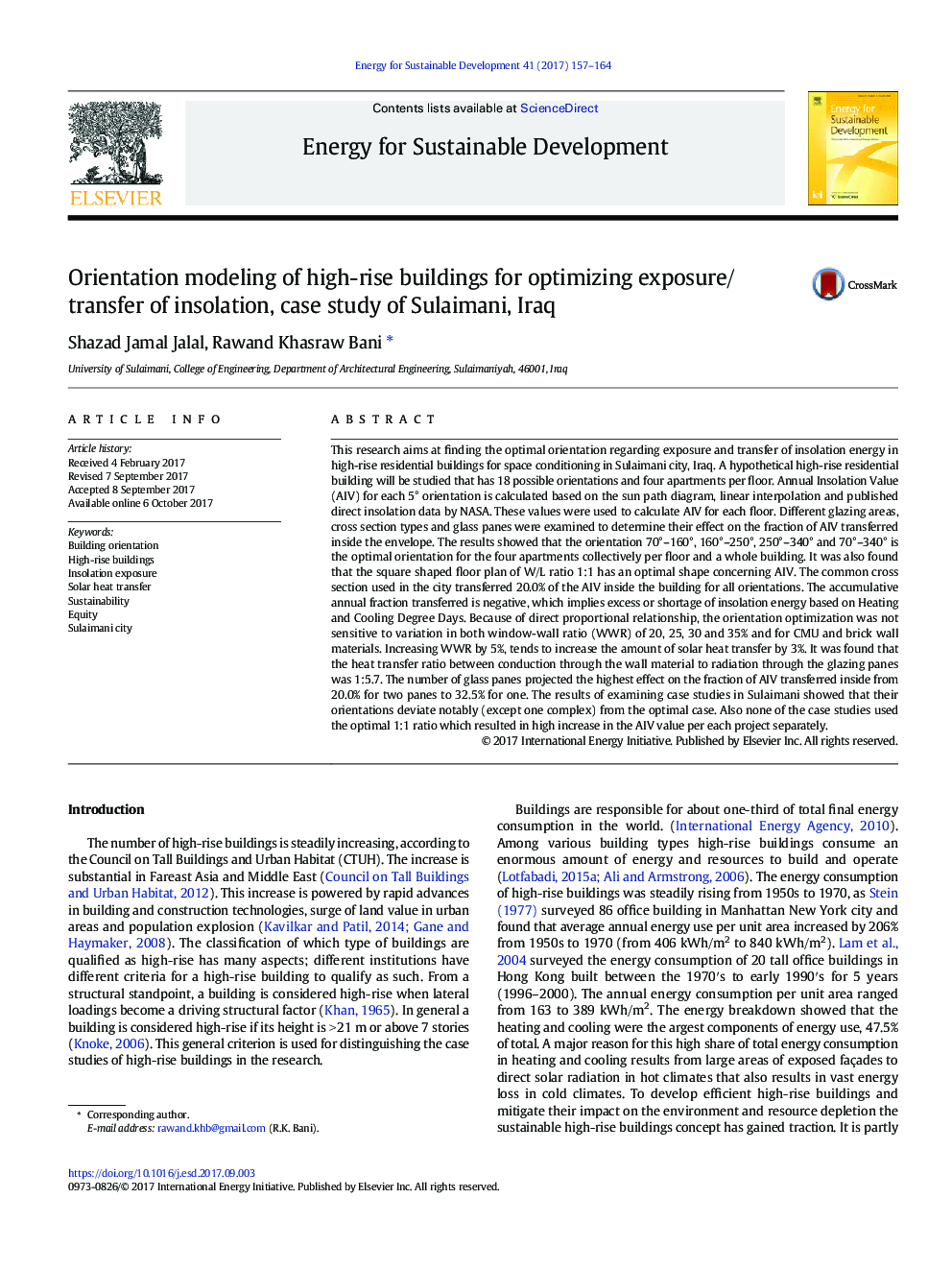| کد مقاله | کد نشریه | سال انتشار | مقاله انگلیسی | نسخه تمام متن |
|---|---|---|---|---|
| 5114309 | 1484389 | 2017 | 8 صفحه PDF | دانلود رایگان |
عنوان انگلیسی مقاله ISI
Orientation modeling of high-rise buildings for optimizing exposure/transfer of insolation, case study of Sulaimani, Iraq
دانلود مقاله + سفارش ترجمه
دانلود مقاله ISI انگلیسی
رایگان برای ایرانیان
کلمات کلیدی
موضوعات مرتبط
مهندسی و علوم پایه
مهندسی انرژی
انرژی (عمومی)
پیش نمایش صفحه اول مقاله

چکیده انگلیسی
This research aims at finding the optimal orientation regarding exposure and transfer of insolation energy in high-rise residential buildings for space conditioning in Sulaimani city, Iraq. A hypothetical high-rise residential building will be studied that has 18 possible orientations and four apartments per floor. Annual Insolation Value (AIV) for each 5° orientation is calculated based on the sun path diagram, linear interpolation and published direct insolation data by NASA. These values were used to calculate AIV for each floor. Different glazing areas, cross section types and glass panes were examined to determine their effect on the fraction of AIV transferred inside the envelope. The results showed that the orientation 70°-160°, 160°-250°, 250°-340° and 70°-340° is the optimal orientation for the four apartments collectively per floor and a whole building. It was also found that the square shaped floor plan of W/L ratio 1:1 has an optimal shape concerning AIV. The common cross section used in the city transferred 20.0% of the AIV inside the building for all orientations. The accumulative annual fraction transferred is negative, which implies excess or shortage of insolation energy based on Heating and Cooling Degree Days. Because of direct proportional relationship, the orientation optimization was not sensitive to variation in both window-wall ratio (WWR) of 20, 25, 30 and 35% and for CMU and brick wall materials. Increasing WWR by 5%, tends to increase the amount of solar heat transfer by 3%. It was found that the heat transfer ratio between conduction through the wall material to radiation through the glazing panes was 1:5.7. The number of glass panes projected the highest effect on the fraction of AIV transferred inside from 20.0% for two panes to 32.5% for one. The results of examining case studies in Sulaimani showed that their orientations deviate notably (except one complex) from the optimal case. Also none of the case studies used the optimal 1:1 ratio which resulted in high increase in the AIV value per each project separately.
ناشر
Database: Elsevier - ScienceDirect (ساینس دایرکت)
Journal: Energy for Sustainable Development - Volume 41, December 2017, Pages 157-164
Journal: Energy for Sustainable Development - Volume 41, December 2017, Pages 157-164
نویسندگان
Shazad Jamal Jalal, Rawand Khasraw Bani,